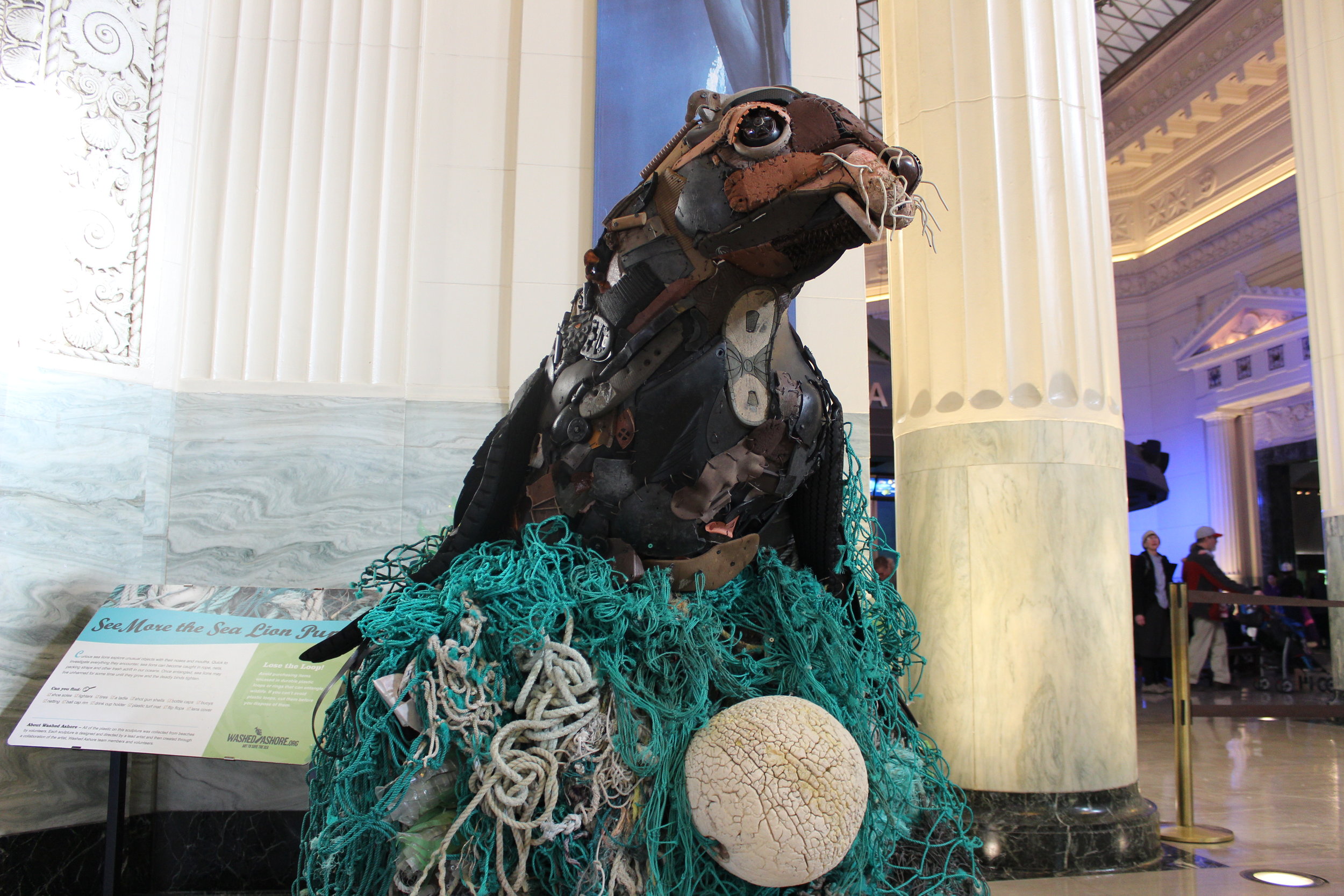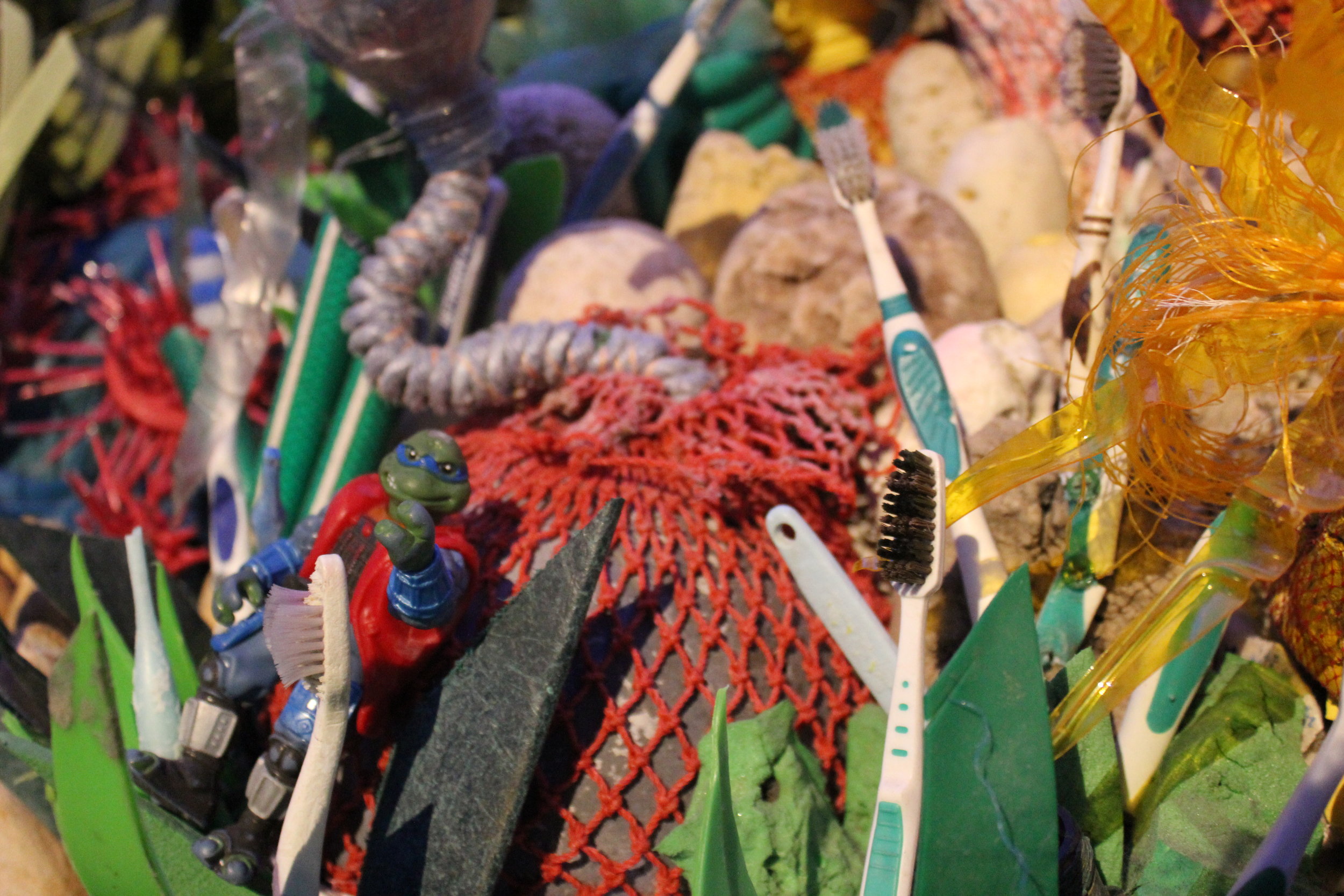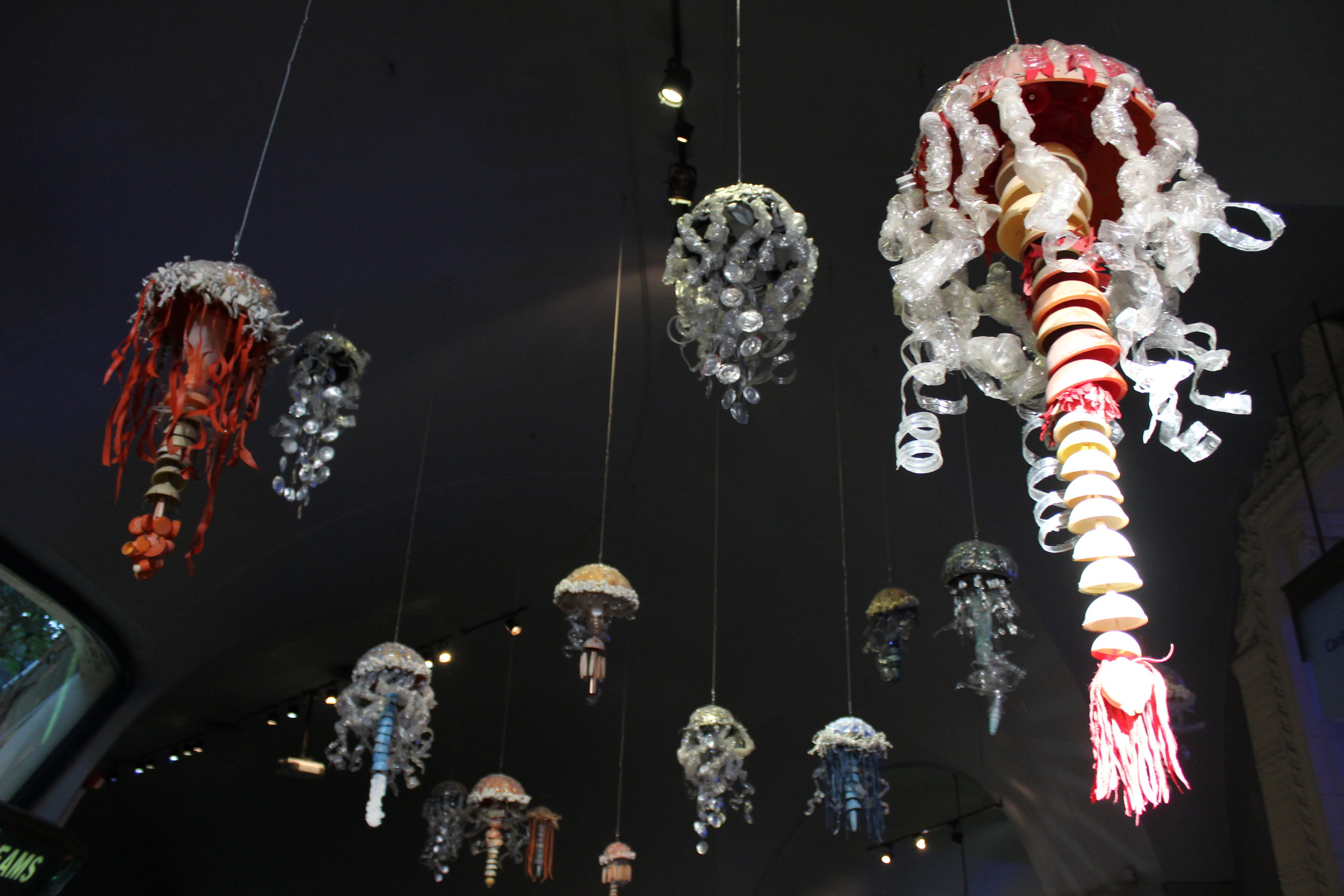Washed Ashore at Shedd Aquarium
By Carlyn Kranking Ah, the beach. In the midst of this bitter Chicago winter, who wouldn’t want to get away to the coast and relax in the warm sun? School and classes would be out of sight and out of mind in that haven of waves, sand, and… plastic waste?
There are an estimated 5.25 trillion pieces of plastic trash in the oceans, and these debris wash ashore on beaches, turning the warm paradise into a dump. Angela Haseltine Pozzi, lead artist and executive director of the nonprofit Washed Ashore, has worked with over 10,000 volunteers to pick up trash off of beaches and use it to create beautiful sculptures of animals. Fifteen of these sculptures are being displayed at Shedd Aquarium through September 2018. Each sculpture reminds the public of the impact their actions can have on the world’s oceans.
As aquarium visitors move between the tanks, many stop to look at these colorful, larger-than-life sculptures and reflect on what they mean. As Graciela Estrello looked at the sculpture called Giacometti the River Otter, her three-year-old son reached for the art.

“Looking at the size of [the art] and knowing that it came from beaches, you really get an idea of how much junk is out there that shouldn’t be out there,” Estrello said.
And believe it or not, there really is a lot of junk out there. Since the organization was founded in 2010, Washed Ashore volunteers have processed 38,000 pounds of marine debris. Even with all of that taken off beaches, there is still a plastic crisis plaguing the oceans today.
A famous example of this problem is the Great Pacific Garbage Patch, a place in the Pacific where a bunch of plastics and other trash has gotten trapped inside circular ocean currents, or gyres. There’s so much debris there, that in some places there are up to 3,500,000 plastic items per square kilometer. What’s even more troubling is that this isn’t well-known for being the only garbage patch in the ocean, it’s well-known for being the biggest.
It’s easy to see while looking at the Great Pacific Garbage Patch why that is a problem. But what is harder is when you can barely see the plastics at all. Plastic is not biodegradable, so it just breaks down into tiny pieces that never actually go away. These microplastics have become a terrible issue in oceans today. They’re ingested by fish, sometimes causing death, and can even affect organisms that eat fish farther up the food chain--including humans.
In making these sculptures, Washed Ashore volunteers have helped to take plastic out of the oceans and to clean up beaches. But the sculptures go beyond that--they inspire others to take action of their own.

Kate Booth, an actor, talks to people for a living, often breaking the fourth wall in her performances. She said that to make a change, it is important to do what she does most: talk.
“I think having conversations about it is the most important thing,” Booth said. “I think getting the word out and talking about it is still as important as it was day one. Most people are aware of the problem now, but you’ve got to keep the conversation going and keep people on top of it.”
In addition to starting conversations, one way to take a stand is to refuse--turning down plastics is a strategy that could help to keep them out of the oceans and off of beaches. Use reusable straws (or none at all!), bring your own reusable grocery bags or use a refillable water bottle rather than buying bottled water.

The Washed Ashore sculptures are beautiful reminders of the ugly truth that is plastic pollution. Booth said that looking at the art left her with mixed feelings.
“The sculptures are really cool,” Booth said. “I’m an artist, so I think they’re just really well-composed, but it also makes me really sad at the same time, because I see these huge chunks of plastic, and it’s not just little stuff… it’s just so, so sad.”
[twitter style="horizontal" float="left"] [fbshare type="button"]




